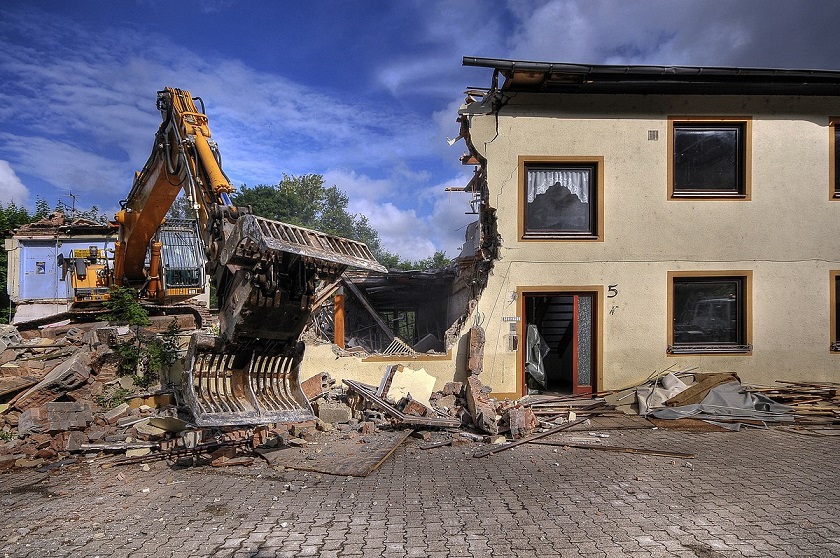Construction and demolition waste, known as CDW, is a big issue world wide. In the United States alone the construction industry generates over 600 million tons of CDW every year. More than a third of all material found in landfills consists of construction and demolition waste associated with building projects
Did you know that over 35 billion tons of materials are extracted from our planet in order to build all the different buildings each year?
The key to this issue is to find cost effective ways to reduce waste and reuse building materials. Demolition on the end only yields 25% reusable materials while deconstruction and recycling up to 70%. Naturally, reconstruction is a more labor intensive and as such can create up to 8 times more jobs than demolition according to Wikipedia.
Deconstruction vs demolition

There is an ongoing debate around demolition versus deconstruction.
Deconstruction is dismantling a building in the reverse order it was created. The goal is to save as much materials as possible for reuse on a new project or to resell it. It is a time consuming process as everything needs to be taken down piece by piece, resulting in many man hours. The materials that can’t be reused, gets recycled, but not before it is separated into suitable categories for the recycling process.
Demolition on the other hand comes in and simply demolishes a building with little care for reusing materials. With demolition, maybe a few materials could be saved before the bulldozer arrives, but it’s generally focusing on speed of execution and being as cost-effective as possible.
What is circular construction?
The goal of circular construction is help reduce waste and recycle as many materials as possible while also keeping old buildings in use instead of demolishing them. Circular construction hubs are then created where materials are stored and made available for purchase in order to reenter the construction process.
The video below explains it well:
Innovate practices to reduce waste
Sustainability experts in the UK are trying to find ways to reduce the amount of waste associated with these building procedures in order for the construction to be a more eco-friendly process. They initially hope that the waste can be reduced as a whole, but for the waste that does have to be accumulated, they hope to find ways to recycle and reuse.
Other companies such as NTEX, operating in the civil construction industry, have managed to create processes enabling them to recycle over 90% of waste from concrete and other materials to use in road construction. They take concrete from demolished sites, place them in a crusher which then turns it into type two aggregate waste that can be reused.
You can see the entire process here.
Challenges
Unfortunately, there are many obstacles to circular construction. The process of recycling CDW is costly, not only from a labor point of view but for testing and certifying recycled materials for use in construction.
There is a need of innovation to come up with sustainable practice that integrate into existing construction ecosystems.
